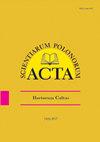草甘膦铵和火焰除草对甜马郁兰(Origanum majorana L.)杂草控制的评价
IF 0.6
4区 农林科学
Q4 HORTICULTURE
引用次数: 1
摘要
本研究的目的是比较火焰除草和喷洒草铵膦对甜马郁兰田间杂草控制的效果。试验采用完全随机四重复设计,样地面积为8 m2。此外,还研究了从对照植物中提取的马郁兰中挥发油的含量及挥发油的组成。马卓兰在播种后13-17天开始出苗,出苗极不均匀,有些年份出苗时间延长至5周。火焰(90 kg丙烷∙ha-1)分两次施用:在发现第一次马角兰出现后立即施用或5天后施用,草铵膦(600 g∙ha-1)与第一次火焰在同一天施用。在马郁兰出苗后3-4周,即马郁兰对杂草竞争最敏感的时期,所采用的除草方法显著减少了杂草的数量和鲜重。它们没有土壤残留活性,对杂草的影响在第一次除草后消失。在试验发生的杂草中,只有稗草(Echinochloa cross -galli, L.)(P. Beauv.)对火焰有一定的忍耐力。第二次喷施烈焰没有提高杂草防治效果,但显著降低了马郁兰的出苗次数和产量。马郁兰的精油含量随年份变化很大,从1.35%到2.34%不等。经鉴定的油中含有33 ~ 36种化合物,其中水合物反式sabinene(28-34%)和松油烯-4-醇(17-21%)占明显优势。本文章由计算机程序翻译,如有差异,请以英文原文为准。
Evaluating glufosinate-ammonium and flame weeding for weed control in sweet marjoram (Origanum majorana L.) cultivation
The objective of this four-year study was to compare the effects of flame weeding and spraying with glufosinate-ammonium on weed control in sweet marjoram field cultivation. The experiment was set up in a complete randomized four-replicate design with a plot area of 8 m2. Moreover, the content of essential oil in marjoram herb obtained from the control plants, as well as the composition of this oil were also studied. Marjoram emergence began 13–17 days after sowing, and it was very uneven and in some years it was extendend up to 5 weeks. Flaming (90 kg propane ∙ ha–1) was applied in two times: immediately after noticing the first marjoram emergence or 5 days later, while glufosinate-ammonium (600 g ∙ ha–1) was applied on the same date as the first flaming. The tested methods of weeding significantly reduced the number and fresh weight of weeds growing 3–4 weeks after the start of marjoram emergence, i.e. in the period of its greatest sensitivity to weed competition. They had no soil residual activity and their effect on weeds disappeared after the first weeding. Among weeds occurring in the experiment, only barnyardgrass (Echinochloa crus-galli (L.) P. Beauv.) was partially tolerant to flaming. Flaming applied at the second time did not increase the effectiveness of weed control, but significantly decreased the number of emergence and the yield of marjoram herb. Essential oil content in marjoram grated herb varied considerably depending on the year, ranging from 1.35 to 2.34%. The oil contained from 33 to 36 identified compounds, among which trans-sabinene hydrate (28–34%) and terpinen-4-ol (17–21%) were clearly dominant.
求助全文
通过发布文献求助,成功后即可免费获取论文全文。
去求助
来源期刊
CiteScore
1.30
自引率
14.30%
发文量
61
审稿时长
4-8 weeks
期刊介绍:
In Acta Scientiarum Polonorum Hortorum Cultus we publish original research papers and review articles containing new and significant information on broad aspects of horticulture and related disciplines. The papers are published in English only, in six issues yearly.

 求助内容:
求助内容: 应助结果提醒方式:
应助结果提醒方式:


